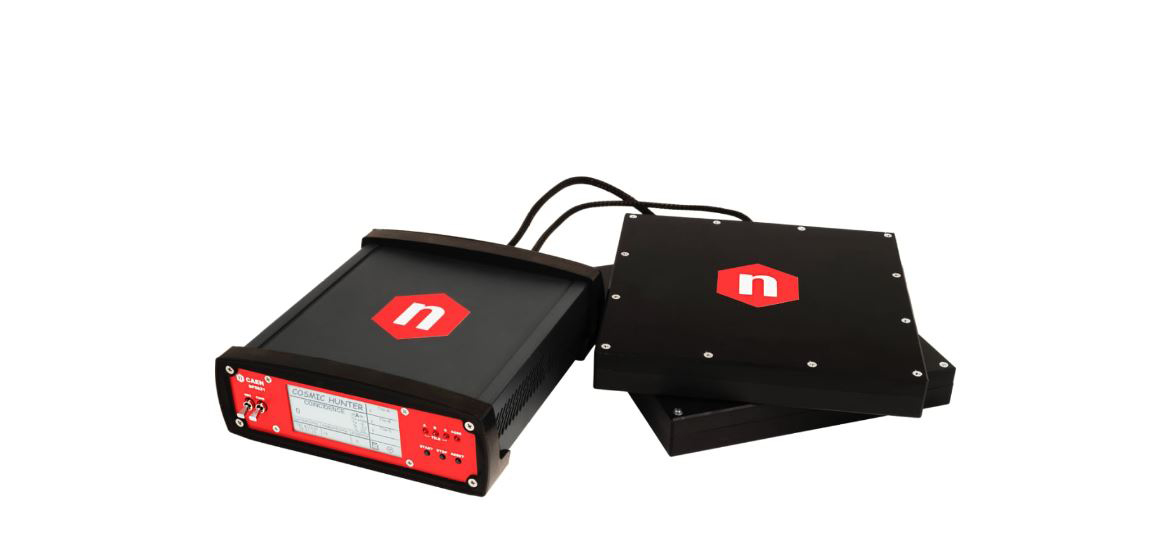| Difficult | Execution Time | Data Analysis | Radioactive Sources |
|---|---|---|---|
| No | No |
Equipment: SP5620CH – Cosmic Hunter
| Model | SP5621 | SP5622 (x2) |
|---|---|---|
| Description | Coincidence Module | Detection System |
Purpose of the experiment
Observation of cosmic flux variation due to solar activity.
Fundamentals
The intensity of the cosmic rays observed at the surface of the Earth is influenced and modulated by geomagnetic effects, by the location where the measurement takes place, and by the solar activity. There is a strong connection between the Sun and its effects on the Earth. The most visible effect relates to sunlight. But another effect relates to cosmic rays. Cosmic rays can be divided into two types: galactic cosmic rays and extragalactic cosmic rays (high-energy particles originating outside the solar system), and solar energetic particles (high-energy particles emitted by Solar activity). The solar wind which is continuously produced by the Sun is not constant due to changes in solar activity. The unsteady nature of the solar wind is responsible for the flux variations of incoming cosmic rays observed at the top of the Earth’s atmosphere. Multiple studies have shown that the sunspot cycle is not correlated with cosmic rays detected. This is caused by the solar magnetic field being stronger at the solar maximum which lets fewer cosmic rays penetrate into the Earth’s atmosphere. Hence, cosmic rays are at a minimum when solar activity is at a maximum.
Carrying out the experiment

Experimental setup block diagram
Connect the cable connectors of the two SP5622 to the tile inputs located on the rear panel of the SP5621 module. Power on the SP5621 module and start the acquisition via the front panel START button. When a charged particle crosses the black tile it’s energy is converted into scintillation light. The photons which are produced are detected by the photosensor and converted into an electrical signal. The number of counts for each scintillator may be viewed via the SP5621 display. Select double scintillators coincidence mode via the related button on the front panel, and then select measurement integration time. Because the acquisition of events takes place only in the presence of the coincidence, all such events coming from a cosmic particle that crosses only one scintillating tile will automatically be discarded.
Determine the system geometry and keep this geometry constant the duration of the measurement. Try to collect as much data as possible, over the period of days or even weeks, in order to perform and understand several theoretical considerations about the night-day trend, the solar wind, etc.
Results
This experiment leads the students to an intriguing and critical analysis of acquired data. Collected data can be compared to data from several websites which are designed allow the user to monitor the solar activity in real-time [RD7]. When comparing such data it is possible to find correlations between the trend of the cosmic rays detected by the system and the solar activity itself, the solar wind speed, the geomagnetic field, etc.

The typical cosmic rate night/day trend can be sometimes modified due to solar activity changes.


